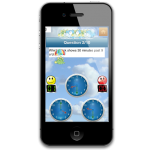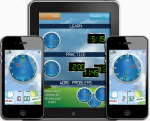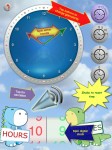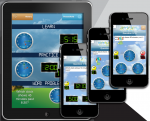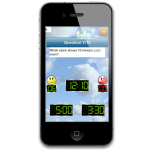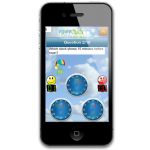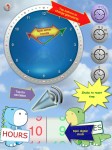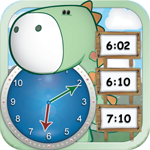 The underlying teaching principle for Tick Tock Clock application is to help children connect the concepts of digital and mechanical clocks. It is assumed that a child knows how to read numbers which should make telling time on the digital clock easy. Comprehending the concept of the time passing is a process. Time is not something we can touch or feel, yet it is something we measure. This makes the whole concept very abstract.
The underlying teaching principle for Tick Tock Clock application is to help children connect the concepts of digital and mechanical clocks. It is assumed that a child knows how to read numbers which should make telling time on the digital clock easy. Comprehending the concept of the time passing is a process. Time is not something we can touch or feel, yet it is something we measure. This makes the whole concept very abstract.
Tick Tock Clock – Learn to Tell Time Using Digital and Analog Clock by @Reks (AtReks) includes:
* Three modes: LEARN, PRACTICE, and MATH WORD PROBLEMS
* Math World Problems test mode includes an option to choose level of difficulty or have it adapted automatically to your child’s level
* ARABIC, ROMAN or NO numeral display on analog clock
* Minute Hand step option by 1, 5, 15, 30 minutes or round hour
* Child-proof settings button (press and hold)
* Word problems test scores are recorded in history
* Narration
* entertains and educates
* offers easy-to-use child-friendly interface
* embodies knowledge and experience of a linguist, educator and parent of three
* represents craftsmanship of a mathematician, practitioner and parent of three
There are several steps that you can take when starting to teach your child how to tell time:
- Explain the watch face:
- Large numbers represent HOURS
- The small numbers/dots represent MINUTES.
- The HOUR hand is short
- The MINUTE hand is longer
- The best advice is to explain the time passing by explaining the MINUTE hand. Talk about tasks that take MINUTES to do. Time yourself and your child doing these tasks. These might include riding a bike, doing homework, reading a book, writing a letter to a friend, drawing, and cooking dinner. Count the minutes on the watch face by ones, fives, tens, fifteens, and thirties.
- Next comes the HOUR hand. Explain that every time the MINUTE hand makes one full trip around the face, the hour hand moves forward one large number. Time yourselves at activities that take an hour or hours to do, for example: watching a TV program or movie, spending time at school or on the playground, or driving to a neighboring city. Count aloud the twelve hours as you point to them on the watch face.
- Practice writing and saying the time with your child. Count again by fives, tens, fifteens, and thirties to help your child understand how to read time more efficiently than by counting the individual dots every time. Encourage your child to practice telling time by keeping a schedule of his/her daily activities.
The first level for learning how to tell time would include numbers denoting hours and only numbers by five denoting minutes. This way the concepts of half hour and quarter of hour can be introduced.
- Tick Tock Clock – math word problems
- Tick Tock Clock Learn To Tell Time…
- Tick Tock Clock – drag clock hands
- Tick Tock Clock – digital and analog time
- Tick Tock Clock – math word problems
- Tick Tock Clock – math time word problems
- Lerne die Uhrzeit mit Digital und Analog Uhren
